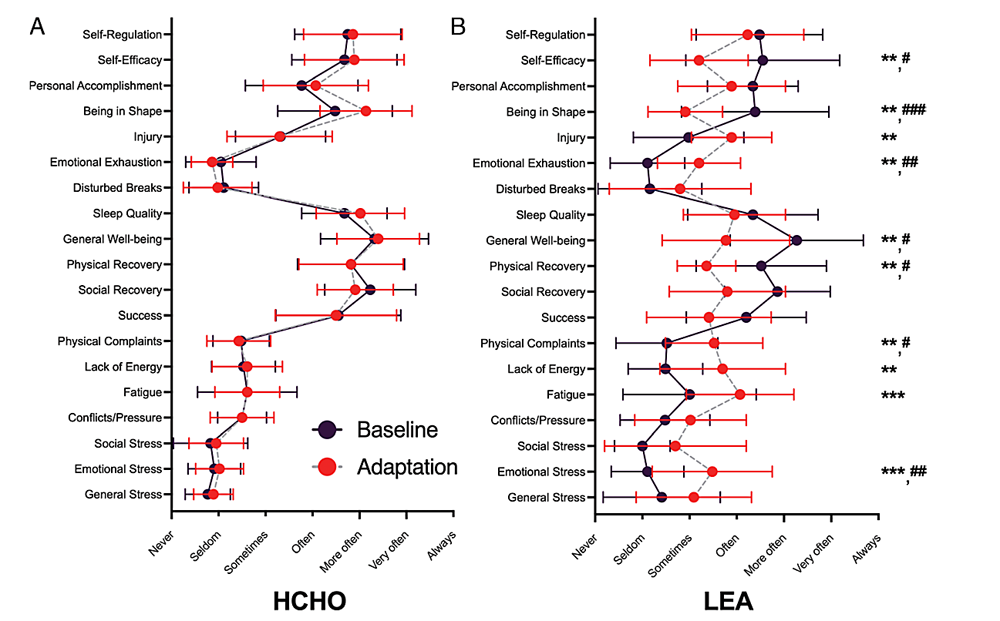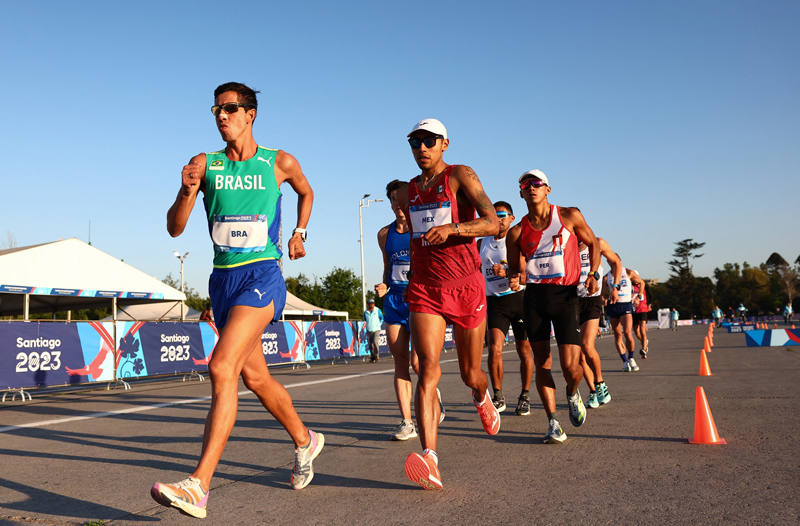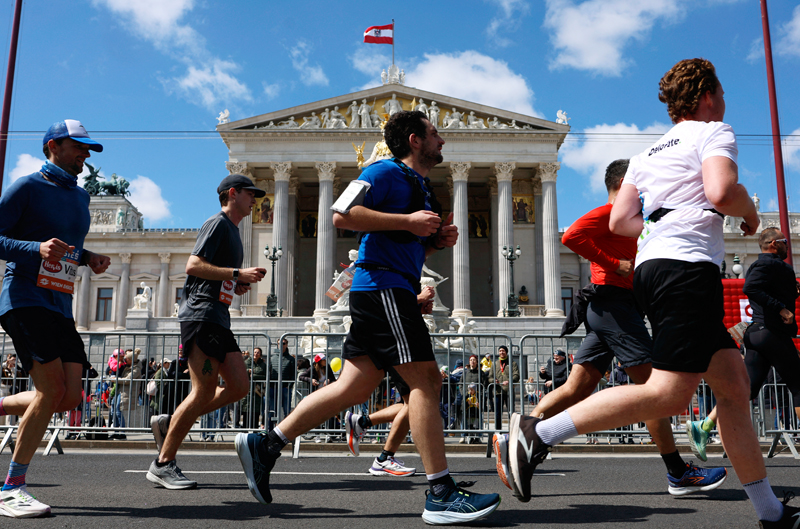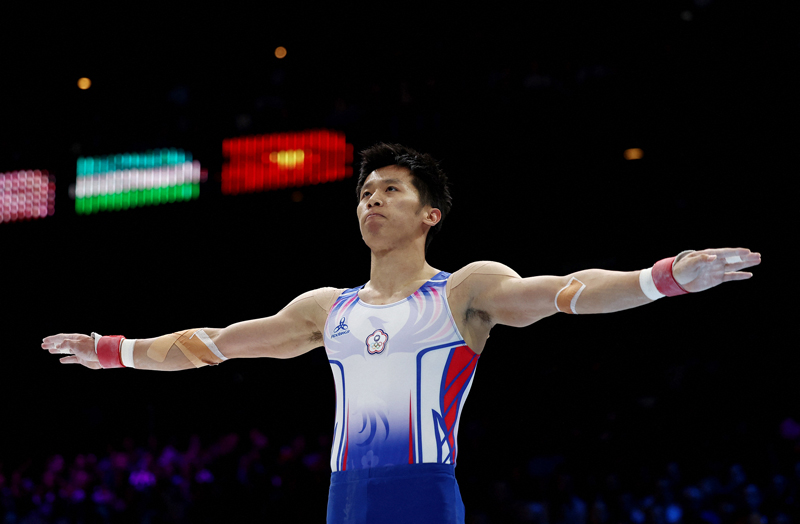You are viewing 1 of your 1 free articles. For unlimited access take a risk-free trial
Weight management: can a short, sharp shock work for you?
Andrew Sheaff investigates new research showing that a short, sharp but temporary drop in calorie intake can help athletes work towards their ideal racing weight
Body mass is an important aspect of performing well in endurance sport. All things being equal, when working against gravity, the lighter an athlete is, the better they will perform. This is basic physics; it simply takes less energy to move a lighter body than a heavier body.
Problem with weight loss
The problem is that all things are never equal. Reducing body weight requires a reduction in energy availability, which is defined as the amount of energy you consume minus the energy you expend. And unfortunately, prolonged reductions in energy availability are associated with many negative outcomes, including compromised bone health as well as hormonal dysregulation in both male and female athletes(1).
Beyond the negative impact on health, when energy availability is reduced in the attempt to reduce body mass, if taken too far, it can actually reduce performance, even if body mass goals are met. Endurance athletes are thus challenged with maintaining an optimal yet appropriate energy availability, which supports both health and performance. This can be difficult to manage!
Prolonged calorie deficit
As more attention is given to the potential drawbacks of low energy availability, more is being learned about the impact of low energy availability on athletes. One important idea that has emerged is that prolonged exposure to low energy availability is most problematic - much more so than short-term severe exposures to low energy availability. If that’s the case, it may be possible for endurance athletes to undergo short, yet extreme periods of low energy availability over time to achieve their body weight goals, while minimizing the potential risks of prolonged low energy availability.
Some new research
In a recent study, researchers investigated the impact of nine days of low energy availability during a challenging block of intense training(2). To do this, a group of Canadian and Australia researchers recruited 23 highly-trained race walkers. There were three main outcomes that the researchers were interested in:
· Can a period as brief as nine days of low energy availability be sufficient to create significant drop in fat mass?
· Can performance be maintained during such a 9-day intervention?
· Is low energy availability coupled with intense training too unpleasant to tolerate?
To answer these questions, the researchers took part in a ‘research-embedded’ training camp. What this means is that the race walkers were taking part in a training camp, and the researchers would control certain aspects of the camp - in this case the walkers’ nutrition. Initially, all subjects were consuming their standard diet at the beginning of the camp. At that point, baseline testing was performed.
What they did
A sophisticated technique of DXA scanning was performed to measure various aspects of body composition, including total mass, lean mass, bone mineral content, fat mass, and fat-free mass (lean muscle and bone). This testing would allow the researchers to determine where any changes in body mass came from – ie whether changes mass came from fat mass or fat-free mass. The former would represent positive changes whereas the latter would demonstrate negative changes.
Prior to beginning the experiment phase of the study, all subjects also completed the REST-Q - a questionnaire designed for athletes which measures various aspects of well-being. As intense training is often perceived as stressful, the researchers wanted to determine if well-being was negatively impacted by the combination of low energy availability and intense training.
The subjects were also tested for exercise economy and maximum oxygen uptake (VO2max). Exercise economy is a measure of how much energy is required to perform a given task at a given work rate. If less energy is required, then the movement is more efficient and therefore more economical. Since exercise economy can change with training, weight loss, and with nutritional changes, it was important to measure it in this study. Likewise, increases in VO2max or the maximal amount of oxygen that can be consumed in a given amount of time, are often a positive outcome of intense training. The researchers wanted to see if the nutritional strategies would impact any adaptations.
Following the baseline testing, the subjects then performed a 10,000-meter race walking race. The purpose of this test was to get a true measure of performance, rather than relying on physiological testing to determine the impact of the interventions. As these subjects were competitive athletes, the ultimate outcome is competitive performance, so it was important to measure that as directly as possible.
As carbohydrate and energy availability would be manipulated in the study, the researchers wanted to ensure that the 10,000-meter races, performed before and after the study, were performed in as similar conditions as possible. To do so, the subjects consumed a high-carbohydrate diet consisting of 8 grams of carbohydrate per kilo of body mass for the 24 hours period to the race. In addition, they consumed 2 grams of carbohydrate per kilo of body mass during a pre-race meal, two hours before racing.
After the 10,000-meter race, the study moved into the next phase, which lasted for six days. During this phase, the subjects switched to a diet that provided high carbohydrate availability and high energy availability. The subjects consumed approximately 40 calories per kilogram of fat free mass per day. During this time, the subjects began the intense training program that was part of the training camp.
The calorie restriction phase
After the initial six days, the experimental phase of the study began, and the subjects were split into two groups:
· For the following nine days, the control group maintained the high energy availability diet they had been using for the previous 6 days.
· The experimental group changed their diet so that it only contained 15 kilocalories per kilogram of fat free mass per day – ie just 37.5% of the calories they were during the previous phase.
Both groups continued to follow the rigorous training program, with no differences in training volumes or intensity between groups.
During the final day of the 9-day experimental phase, all subjects once again performed the baseline body composition, exercise economy, VO2max, and REST-Q testing. Then for the following 24 hours, they consumed a high carbohydrate diet consisting of 8 grams of carbohydrate per kilogram. Finally, they also consumed 2 grams of carbohydrate per kilogram of body mass during a pre-race meal two hours before the the second 10,000-meter race (it was important to ensure that the subjects were properly fueled prior to performing walking race to allow for optimal performance for all athletes).
The results
The major finding of the study was that there was a significantly larger loss of body mass in the low energy availability group as compared to the control group. Importantly, this loss of body mass was driven primarily from fat mass, with a 1.6kg reduction in the low-energy group vs. a 0.9kg reduction in the control group. So if the goal is to lose fat mass in a short amount of time, greatly reducing energy availability can be an effective strategy for creating a meaningful change in a small amount of time.
Importantly, race performance was improved similarly in both groups, so it appears that performance can be maintained during short-term, severe energy restriction. However, the results of the REST-Q declined in the low-energy group, with significantly lower scores for overall stress, overall recovery, sport-specific stress, and sport-specific recovery (see figure 1). In short, while the low energy availability strategy was effective for fat loss, it was certainly challenging for the subjects!
From a physiological standpoint, there were no changes in VO2max throughout the study. However, there were small improvements in exercise economy in both groups, but there were no significant differences between the groups, with the exception of slightly lower heart rates in the experimental group. An interesting observation was that there was an increase in fat oxidation and a decrease in carbohydrate oxidation after the training period in both groups, with larger changes in the low energy availability group. If improving fat oxidation is a desired outcome, short periods of low energy availability may be effective.
Figure 1: Effect of low-energy vs. control diet on athletes’ well being

Practical advice for athletes
For serious endurance athletes, maintaining an individually appropriate body mass is an important component of high performance. And sometimes, we may find ourselves further away from that body mass than we’d like to be. This research indicates that rather than undertaking a prolonged phase of low energy availability, it’s possible to use a brief, but severe phase of energy restriction without negative impacts on performance.
If your goal is to slowly make your way back to your desired race weight, a few of these short, low-energy interventions may be a useful strategy to help get you there. However, these should be brief (no longer than a week or so) because training during them will feel like hard work. They should also be well spaced out to allow plenty of recovery in between. There’s no data on what the ideal spacing might be, but a cautious approach might be to do no more than one per month.
A caveat however, is that while this approached worked well for the elite race walkers in terms of maintained performance, not all athletes tolerate low-energy training so well. If you try this approach and you begin to experience leaden limbs and feeling drained, you will need to back off and look at other options such as non-calorie controlled ‘time-restricted feeding’ – see this article. More generally, if you are finding that your weight is straying too far away from your ideal on a regular basis, it could suggest that you need to revisit the basics of your day-to-day diet (see this article) and work out how it can be improved to keep you on the straight and narrow!
References
1. Sports Med. 2021 Nov;51(11):2251-2280. doi: 10.1007/s40279-021-01491-0.
2. Med Sci Sports Exerc. 2023 Aug; 55(8): 1487–1498. doi: 10.1249/MSS.0000000000003169
Newsletter Sign Up
Testimonials
Dr. Alexandra Fandetti-Robin, Back & Body Chiropractic
Elspeth Cowell MSCh DpodM SRCh HCPC reg
William Hunter, Nuffield Health
Newsletter Sign Up
Coaches Testimonials
Dr. Alexandra Fandetti-Robin, Back & Body Chiropractic
Elspeth Cowell MSCh DpodM SRCh HCPC reg
William Hunter, Nuffield Health
Keep up with latest sports science research and apply it to maximize performance
Today you have the chance to join a group of athletes, and sports coaches/trainers who all have something special in common...
They use the latest research to improve performance for themselves and their clients - both athletes and sports teams - with help from global specialists in the fields of sports science, sports medicine and sports psychology.
They do this by reading Sports Performance Bulletin, an easy-to-digest but serious-minded journal dedicated to high performance sports. SPB offers a wealth of information and insight into the latest research, in an easily-accessible and understood format, along with a wealth of practical recommendations.
*includes 3 coaching manuals
Get Inspired
All the latest techniques and approaches
Sports Performance Bulletin helps dedicated endurance athletes improve their performance. Sense-checking the latest sports science research, and sourcing evidence and case studies to support findings, Sports Performance Bulletin turns proven insights into easily digestible practical advice. Supporting athletes, coaches and professionals who wish to ensure their guidance and programmes are kept right up to date and based on credible science.










